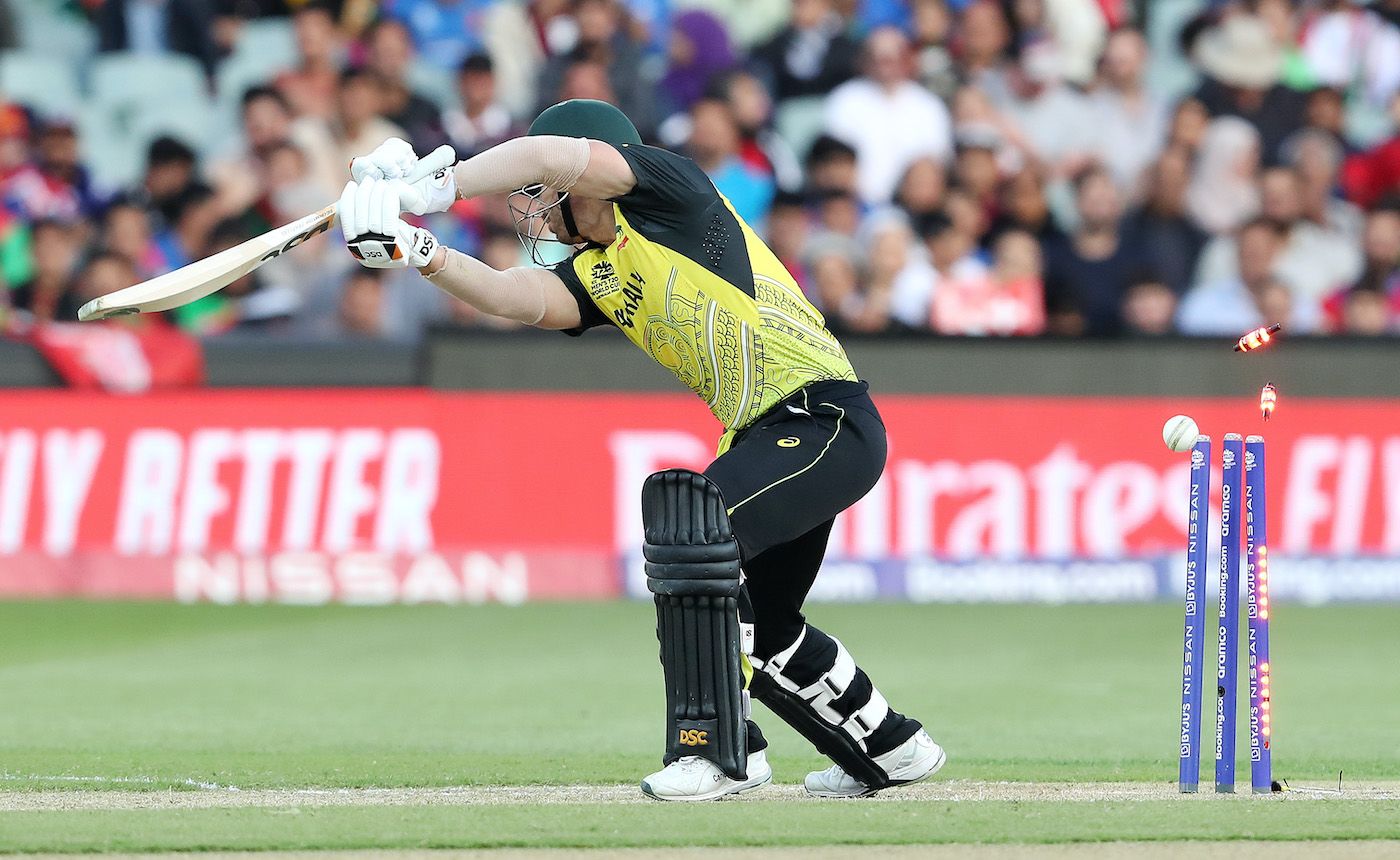That was Australian assistant coach
Daniel Vettori‘s taciturn response after his side’s four-run win
over Afghanistan to a suggestion there might be wider issues for a side that now sits one game from elimination at the T20 World Cup.
Australia’s humbling at New Zealand’s hands on the opening day of the Super 12 stage might have been surprising for the opposition it came against: New Zealand had not beaten Australia in Australia in any format since 2011, and found themselves comfortably outclassed when the two sides contested
last year’s final. But New Zealand’s sensational 89-run win not only got Australia’s title defence to the worst possible start, it hobbled the hosts’ net run rate and has very likely cost them a semi-final place.
While that evisceration might have been an exception, few have ever been convinced of Australia’s impregnability in this format, even on that run to the title in the UAE. Because T20 World Cups don’t necessarily throw up the best team as the winner so much as the side that manages to string enough knockout games together. In 2021, when an Australian unit that had, just four games ago, been
thrashed by England with 50 balls to spare lifted their inaugural T20 World Cup title, it only seemed to underscore that point.
A year isn’t a great deal of time between World Cups, but even so, this Australian side is strikingly similar to the one that won it all last November. Ten of the 11 who played
against Ireland also started the World Cup final last year, and the 11th, Steven Smith, played today against Afghanistan. Whatever issues that side had has effectively carried over to this particular campaign, in completely different conditions. Also, it’s perhaps unsurprising a squad that already had the highest average age at last year’s World Cup began to see niggling injuries pile up; during that game against Ireland, three players went off the field nursing hamstring strains, and two of them would end up ruled out against Afghanistan.
Australia’s use of the resources they still had turned out to be a bit baffling too. All of which came to a head in a performance that, if not just as ordinary as that New Zealand showing, certainly finished a close second.
Mitchell Starc has been struggling for form for the best part of three years, but having tied themselves in knots with
how best to use him this tournament, they stumbled upon a novel solution: dropping him altogether. In a game Australia needed to win by – to use the technical term – lots and lots of runs, ditching perhaps the world’s best inswinging yorker bowler left everyone from Tom Moody to Michael Clarke to even Afghanistan coach Jonathan Trott completely nonplussed.
In addition, no international team has a worse T20I average against left-arm pace this year than Afghanistan, scoring 16.2 runs per wicket. Left-arm pacers take an Afghan wicket every 13.7 balls, the second-best strike rate among all sides. They only concede runs at 7.1 runs per over; no side struggles to score as much against that kind of bowling. The replacement,
Kane Richardson, might have a better overall death-overs record than Starc, but taken apart for 48 runs as he was, did little to
justify the tactical epiphany Australia appeared to drop their most explosive pacer on.
Having eschewed arguably the most aggressive bowling option, opting against promoting
Glenn Maxwell further up the order in a bid for a bigger score appeared equally perplexing. Tim David came into this tournament as Australia’s X-factor, but hasn’t quite seen things go his way. There was perhaps little Australia could do but recall Smith to start, but sending him in after David Warner fell with the fielding restrictions still active continues to show Australia’s inability to buy into a philosophy of all-out, fearless attack. That he fell for four off as many deliveries perhaps meant little damage was done, but what happened next appeared to surprise the side’s most lethal power hitter as much as anyone attuned to watching modern, progressive T20 cricket.
“We lost the first wicket and I came out thinking I was five,” Maxwell would say post-match. “But I was told I was at six, so I said okay. I left my gear and I went back inside. There wasn’t a whole lot of conversation around it, I knew it was going to be a fluid batting order.”
When Maxwell eventually did come in, he smashed an unbeaten 54 off 32, by far the highest strike rate of his team-mates. But for a man who looked in sensational touch at the nets the previous day, not to mention the high ceiling a Maxwell in form offers, being deprived of the chance to face even more deliveries to pile on the runs hinted at an impression of stifling inflexibility that has never quite escaped this Australian side.
To boot, Maxwell would admit the knowledge of limited batting to follow played a part in how gung-ho he chose to be with shot selection, a problem alleviated either by a promotion or the total abandonment of any fear of getting out in pursuit of high-risk runs. On both counts Australia came up short in the way that England – who, in their own must-win game
against New Zealand, dropped Dawid Malan to No. 8 and posted their highest score of the tournament – likely wouldn’t have.
It is that lack of ruthlessness – what a thing to say about any Australian side – that might yet do for them at this T20 World Cup. While they were clinical in making up for run rate dents against
Bangladesh and
West Indies last year, they blew a golden opportunity to do the same in Brisbane against Ireland, allowing them to post 137 after reducing them to 25 for 5. Against Sri Lanka, they would find themselves bogged down in a chase they ended up achieving at a canter, the early tentativeness costing them once again.
This certainly isn’t the worst Australian T20I side, even as they stare elimination in the face. They have lost just one match all tournament, and were deprived of the chance to determine their own destiny by
the Melbourne rain. But as the curtain draws down on a home World Cup Australia are likely to take no further part in, the idea it was “just that New Zealand game” appears thinner than ever. This is a side that will likely be dismantled before the next T20 World Cup comes around, and on current evidence, it’s perhaps about time it was.





